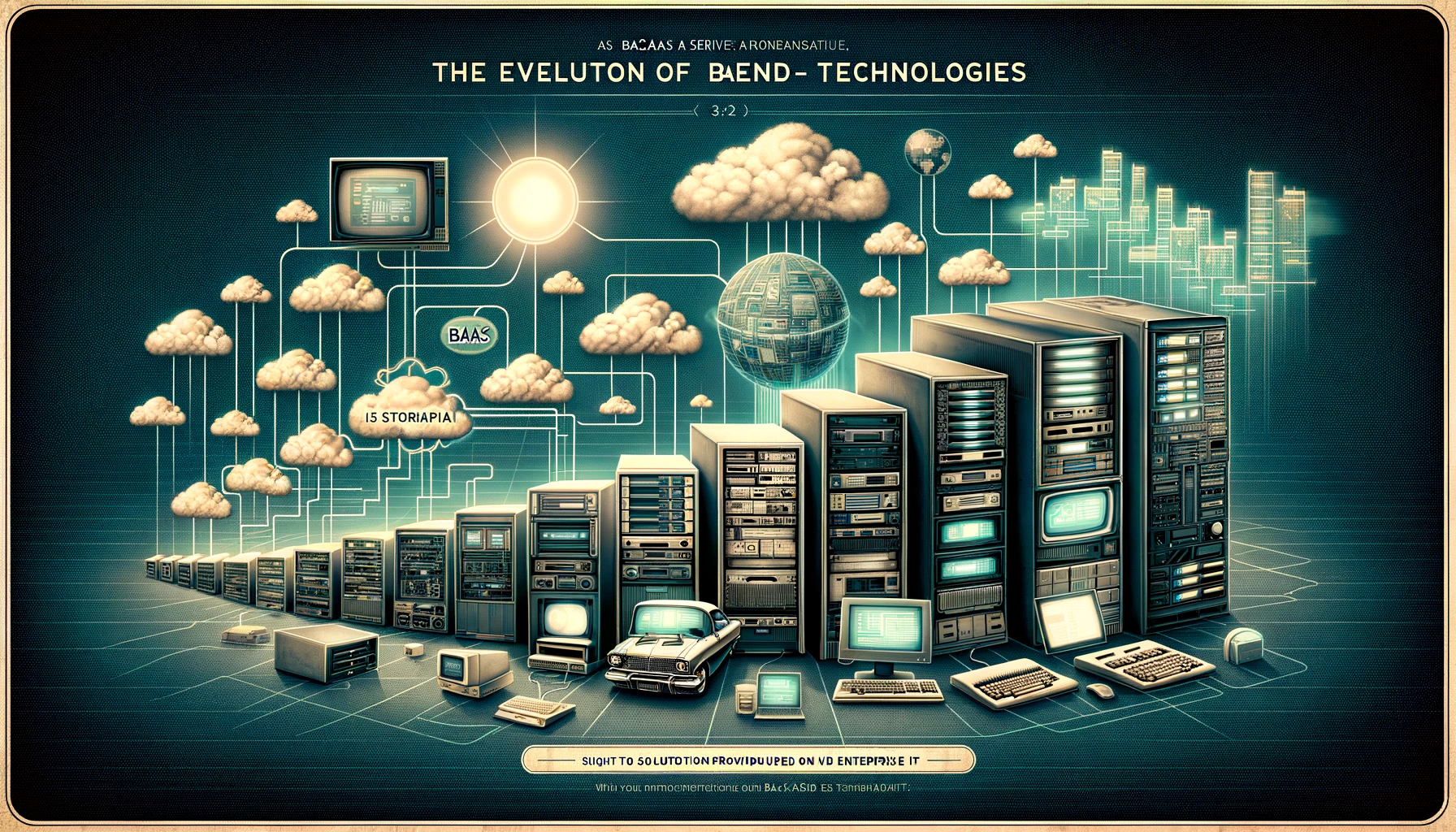The Evolution of Backend Technologies: BaaS and its Impact on Enterprise IT, Featuring StormAPI
In the ever-evolving landscape of information technology, the transformation of backend technologies has been particularly revolutionary for enterprise IT. The advent and proliferation of Backend as a Service (BaaS) platforms, such as StormAPI, have marked a significant milestone in this evolution, altering how enterprises develop, deploy, and manage their software applications. This article delves into the technical journey of backend technologies, focusing on the advent of BaaS and its profound impact on enterprise IT infrastructure and development practices.
The Traditional Backend Development Paradigm
Traditionally, backend development involved setting up and managing servers, databases, application logic, and handling security and data protection measures—all in-house or on dedicated hosting services. This model, while offering full control over the backend environment, often led to significant challenges:
- Resource Intensity: Required substantial investment in hardware and software resources.
- Complexity in Scalability: Scaling infrastructure to meet fluctuating demand was often cumbersome and expensive.
- Maintenance Overheads: Continuous need for updates, patches, and security monitoring.
- Slower Time-to-Market: The complexity and resource demands often extended development cycles.
The Emergence of BaaS
The emergence of BaaS platforms represented a paradigm shift in backend development. BaaS providers, leveraging cloud computing technologies, began offering pre-built backend services and infrastructure on a rental basis. Developers could now integrate complex backend functionalities into their applications through APIs and SDKs provided by BaaS platforms, significantly simplifying the development process.
StormAPI: A BaaS Solution for Modern Enterprise IT
StormAPI exemplifies the BaaS model, providing a comprehensive suite of backend services designed for rapid development and deployment of applications. It offers:
- Scalable Database Services: Automatically scaling databases that support real-time data synchronization.
- Authentication Services: Robust and secure user authentication mechanisms.
- Serverless Functions: Allowing for the execution of backend logic without managing server infrastructure.
- Real-Time Data Processing: Facilitating instant data updates and notifications.
Impact of BaaS on Enterprise IT
The introduction of BaaS platforms like StormAPI has had a profound impact on enterprise IT, reshaping development practices, operational strategies, and overall IT economics.
1. Accelerated Development Cycles
By abstracting the complexity of backend setup and management, BaaS platforms have significantly reduced the time and effort required to develop and deploy applications. Enterprises can now focus on creating value through their application’s frontend, relying on BaaS for rapid backend integration. This acceleration has led to shorter development cycles, enabling faster time-to-market for new products and features.
2. Cost Efficiency
BaaS models offer a pay-as-you-go pricing strategy, which allows enterprises to optimize costs based on actual usage, without the need for significant upfront investment in infrastructure. This scalability not only reduces initial capital expenditure but also aligns ongoing costs directly with business growth and application demand.
3. Enhanced Scalability and Reliability
BaaS platforms are inherently designed to be scalable and highly available, ensuring that enterprise applications can handle varying loads with high reliability. Features like auto-scaling and global distribution of data centers minimize the risk of downtime and performance bottlenecks, critical for maintaining seamless user experiences.
4. Simplified Backend Complexity
BaaS platforms handle complex backend functionalities, from database management to cloud computing operations, through a simplified interface. This reduction in complexity lowers the barrier to entry for developing advanced applications, making it feasible for enterprises to innovate and experiment with new ideas without the need for specialized backend expertise.
5. Focus on Core Business Functions
With backend infrastructure and services managed by BaaS platforms, enterprises can redirect their focus and resources towards core business functions and frontend development. This shift allows businesses to enhance their competitive edge by concentrating on creating unique value propositions and improving user engagement.
6. Security and Compliance
BaaS platforms like StormAPI provide comprehensive security features, including data encryption, authentication protocols, and compliance with regulatory standards. This ensures that enterprise applications built on BaaS platforms meet stringent security requirements, a critical aspect in today’s data-sensitive environment.
The evolution of backend technologies, marked by the advent and adoption of BaaS, has dramatically transformed the landscape of enterprise IT. Platforms like StormAPI epitomize the BaaS model, offering a powerful, scalable, and cost-effective solution for rapid application development and deployment. The impact of BaaS on enterprise IT is undeniable, providing a pathway for accelerated innovation, enhanced operational efficiency, and a sharper focus on creating exceptional user experiences. As BaaS platforms continue to evolve, they will undoubtedly play an increasingly central role in shaping the future of enterprise IT infrastructure and application development strategies.


Leave a Reply